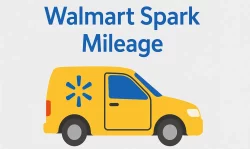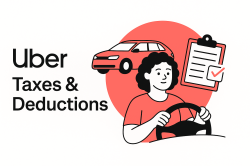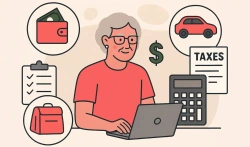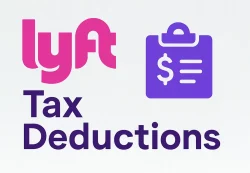Last Updated: November 9, 2025
Driving for Uber or Lyft can be a rewarding gig, offering flexibility and the chance to meet new people. However, not every passenger is honest. In fact, there are several scams that passengers might try to pull off, and if you’re not careful, you could lose out on your earnings or worse. Being aware of these Uber and Lyft scams is essential for protecting yourself and your income. In this blog, we will dive into the most common passenger scams and how you can avoid falling victim. Additionally, we will cover tips on how to make up for your losses.

Table of Contents
List of Common Rideshare Scams
1. The Free Ride Scammer
One of the most frustrating Uber and Lyft scams involves passengers trying to score a free ride. After completing the trip, they might file a false complaint with the rideshare company, claiming poor service or even that the trip never happened. This scam is designed to get a refund at your expense.
How to handle it:
The best way to protect yourself is to document everything. After each trip, rate your passenger and write a brief note if anything out of the ordinary happened. If a false complaint does arise, report the passenger immediately through the app. Uber and Lyft take driver feedback seriously and will investigate complaints.
2. Overcrowding the Vehicle
Some passengers try to avoid paying for a larger vehicle by squeezing in more people than allowed. Overcrowding can lead to safety issues and might even get you a ticket, not to mention deactivation from Uber or Lyft.
What to do:
It’s crucial to enforce passenger limits for both safety and legal reasons. Politely remind passengers of the vehicle’s seating capacity and refuse to start the ride if they insist on overcrowding. Safety first, always!
3. The Destination Switch
Another common Uber and Lyft scam involves passengers requesting to change destinations mid-ride, but without updating it in the app. This is risky because passengers can later complain that you took them to the wrong location, and without app verification, it’s your word against theirs.
Tip to get ahead of this:
Always ask passengers to update the destination in the app, no matter how small the change might seem. This protects you from false claims and ensures you’re paid correctly for the trip.
4. Cash Offerings
Sometimes, passengers will offer cash for a ride. While it might seem tempting, this is a dangerous move. Accepting cash rides goes against Lyft’s and Uber’s terms of service and leaves you unprotected by the company’s insurance policies in case of an accident.
How to refuse cash:
If a passenger insists, kindly explain that payments must be made through the app. Besides the legal risks, anyone who refuses to pay with a card may be looking to scam you.
5. The Fake Bill Trick
This scam involves passengers paying with fake hundred-dollar bills in hopes that drivers won’t notice. Fake currency is a growing issue, and once you accept it, it’s nearly impossible to get reimbursed.
How to spot it:
Become familiar with recognizing counterfeit money, but your safest bet is to avoid cash transactions altogether. Just say no to cash rides, and you won’t have to worry about this scam.
6. Recruiting Rideshare Drivers
Though not exactly a scam, some passengers may try to recruit drivers from one platform to another. This is more common with Lyft recruiting Uber drivers, offering promises of bonuses and better conditions.
How to respond:
It’s up to you whether to entertain these conversations, but don’t feel pressured into making any changes on the spot. Research the offers thoroughly before making any moves.
7. Random Passengers
One of the simplest, yet most concerning, Uber and Lyft scams is when passengers try to hop into the wrong vehicle. This can be a mistake, but sometimes people do it intentionally, hoping to get a free ride or confuse the driver.
Stay safe:
Always verify passengers before letting them in. Ask for their name, and keep your doors locked until you’ve confirmed it. This simple habit can prevent a lot of confusion and ensure you’re picking up the right person.
8. The Canceler
The Canceler scam happens when passengers cancel the ride mid-trip. They might do this to try and get a free ride, assuming that drivers won’t notice until they’ve already covered a significant distance. Without an active ride in the system, drivers won’t get paid for the trip.
How to manage it:
Always keep your GPS on and ensure that all trip notifications are audible. If a passenger cancels mid-trip, politely ask them to exit the vehicle and explain that the ride is no longer valid. In more extreme cases, if the passenger refuses to exit, don’t hesitate to involve law enforcement.
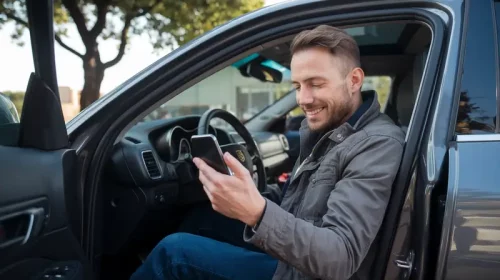
Making Up for Losses Through Smart Strategies
Even if you stay vigilant, sometimes Uber and Lyft scams are unavoidable. If you’ve ever fallen victim to one, you know how frustrating it is to lose money that you worked hard for. But all hope isn’t lost—you can take steps to make up for those losses by boosting your earnings and optimizing your expenses.
Here are some actionable tips to help you increase your income and reduce costs:
Be Mindful of Your Passengers
Not all earnings come from Uber or Lyft fares; tips can make a big difference in your bottom line. A little effort goes a long way. For example, passengers appreciate politeness, light conversation, and help with their luggage. Furthermore, maintaining a clean car, using an air freshener, or offering small amenities like bottled water can create a positive impression, leading to bigger tips and higher ratings. These small investments in the rider’s experience can often help soften the blow if you’ve lost money due to a scam.
Track Fuel Efficiency
Fuel costs are one of the biggest expenses for rideshare drivers. Tracking how much fuel you’re using per shift helps you identify areas for improvement. If your car doesn’t automatically track fuel efficiency, it’s simple to do manually: fill up your tank, drive, then refuel and divide the number of gallons by the miles driven. This lets you know how efficiently your vehicle is running, which can help you make informed decisions to save on gas over time.
Deduct Car Expenses from Your Taxes
Another way to recover from losses is through mileage deduction, which can significantly reduce your tax bill. But here’s the catch: the rides tracked by Uber and Lyft aren’t enough to fully capture all your deductible miles. To maximize your Lyft mileage tax savings / Uber tax deductions, you need to track every eligible mile, including trips for maintenance, refueling, or even mid-trip cancellations.
Tracking your miles is key to ensuring you’re deducting every mile you’re entitled to. It’s important to use a system that captures every business-related trip—not just the rides Uber and Lyft apps record.
Why Automatic Mileage Tracking is a Game-Changer
Saving Time
Manual mileage tracking on a mileage notebook or an Excel mileage spreadsheet is a hassle, especially when you’re constantly on the go, accepting ride requests with just seconds to spare. You don’t want to miss out on rides because you’re busy logging miles. That’s where an automatic mileage tracker like MileageWise comes in. It records your trips, so you can focus on driving while the app handles your mileage logs. Plus, MileageWise offers features like automatic mileage log creation and customizable tracking—saving you time and effort.
Maximizing Savings
Automatic tracking ensures that you’re logging every eligible trip, which can result in bigger deductions during tax season. It also captures all the necessary details to stay compliant with IRS mileage log requirements. By using a mileage tracker, you’ll maximize your tax savings and ensure no eligible mile is missed.
Try MileageWise for free for 14 days. No credit card required!
In Conclusion
While Uber and Lyft scams can be a frustrating part of the job, there are ways to protect your income and make up for losses. By improving your passenger interactions, staying mindful of fuel efficiency, and utilizing automatic mileage tracking, you can boost your earnings and save on taxes. With tools like MileageWise, you can streamline your driving operations, allowing you to focus on your gig.
FAQ
How do I report a scam at Uber or Lyft?
If you suspect a passenger has scammed you, you can report it directly through the Uber or Lyft app. Go to the “Help” section, select the trip in question, and describe the issue in detail. Provide as much information as possible so that Uber/Lyft can investigate the situation.
Will I receive a refund if I get scammed by a passanger?
Rideshare companies review each case individually. If they determine that a scam occurred, they may offer compensation or refunds. It’s important to report the issue immediately with all relevant details to increase your chances of getting a favorable outcome.
Should I accept cash for rides?
No, accepting cash violates Uber and Lyft’s terms of service and leaves you unprotected by the platform’s insurance. Always use the app for payments to ensure you’re covered and to avoid potential scams.
How does mileage deduction save me money?
Mileage deduction allows rideshare drivers to deduct the miles they drive for work purposes from their taxable income. This includes trips with passengers, driving to refuel, maintenance stops, and even mid-trip cancellations. To claim this deduction as a Lyft driver or Uber driver, you need to track your mileage accurately throughout the year.
Why is automatic mileage tracking better than manual tracking?
Automatic mileage tracking saves time and ensures accuracy by recording every eligible mile. Unlike manual tracking, it eliminates the need for constant logging and minimizes the risk of missed trips. Apps like MileageWise make it easier to maximize your deductions and stay compliant with IRS regulations.
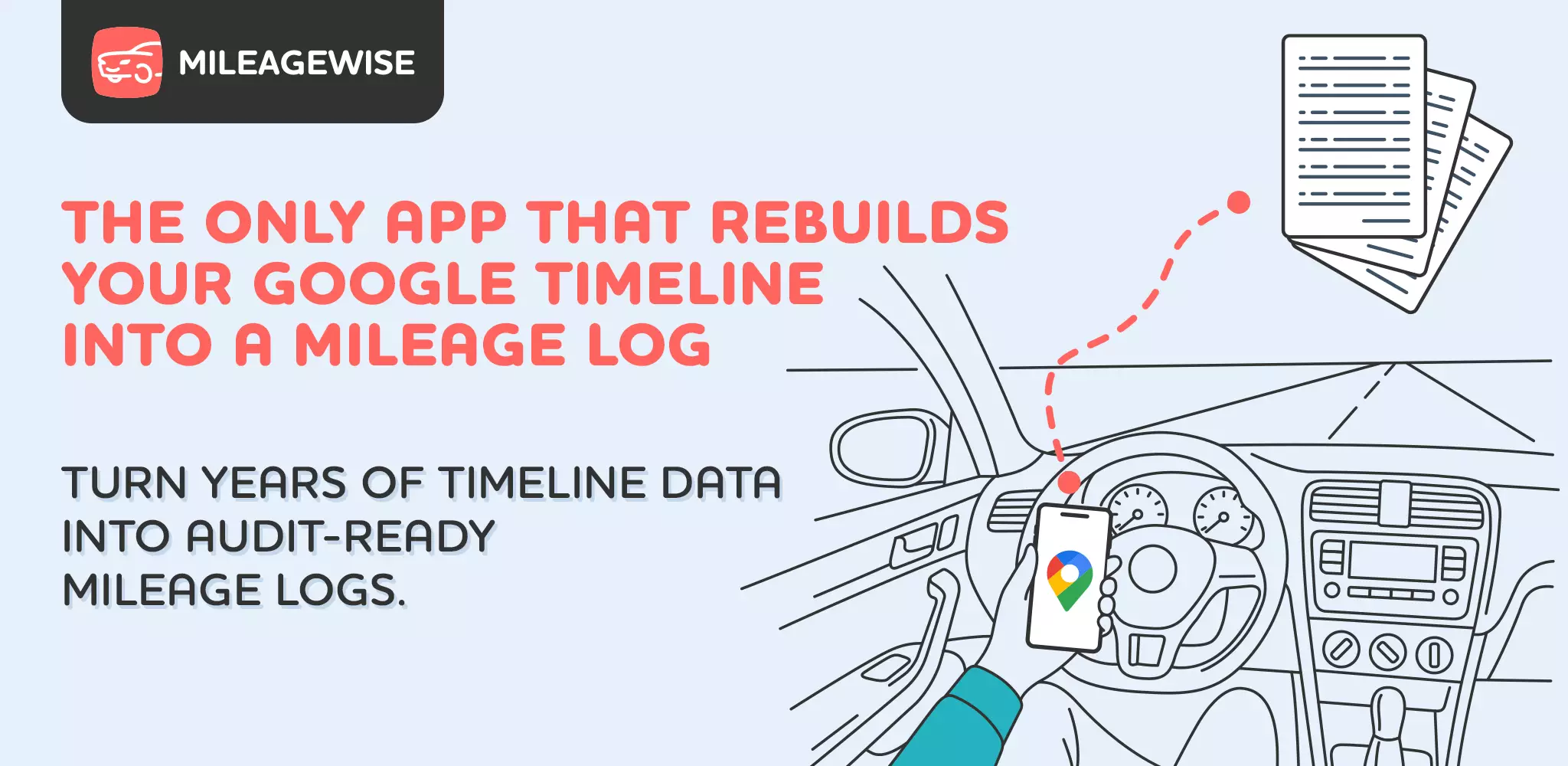
Introducing the Google Timeline to Mileage Log Mobile App
We’re excited to share our latest development! You can now convert your Google Maps Timeline drives directly into an IRS-compliant mileage log right on your

DoorDash Tips and Tricks: Your Edge Over Competition
Last Updated: November 17, 2025 I’m excited to share the top DoorDash tips and tricks shared by YouTuber Pedro “Mr.BetonYou” Santiago. He collected and vetted the

8 Uber and Lyft Scams Every Driver Should Know
Last Updated: November 9, 2025 Driving for Uber or Lyft can be a rewarding gig, offering flexibility and the chance to meet new people. However,
SherpaShare Shutdown – What To Do Now?
Last Updated: October 7, 2025 SherpaShare was a service designed primarily for people who work as independent contractors, particularly those in the ride-sharing and delivery
Gas Mileage Tracker: Your Key to Savings
Last Updated: August 8, 2025 A gas mileage tracker helps drivers watch their vehicle’s fuel use, mileage, and related costs. You might want one to
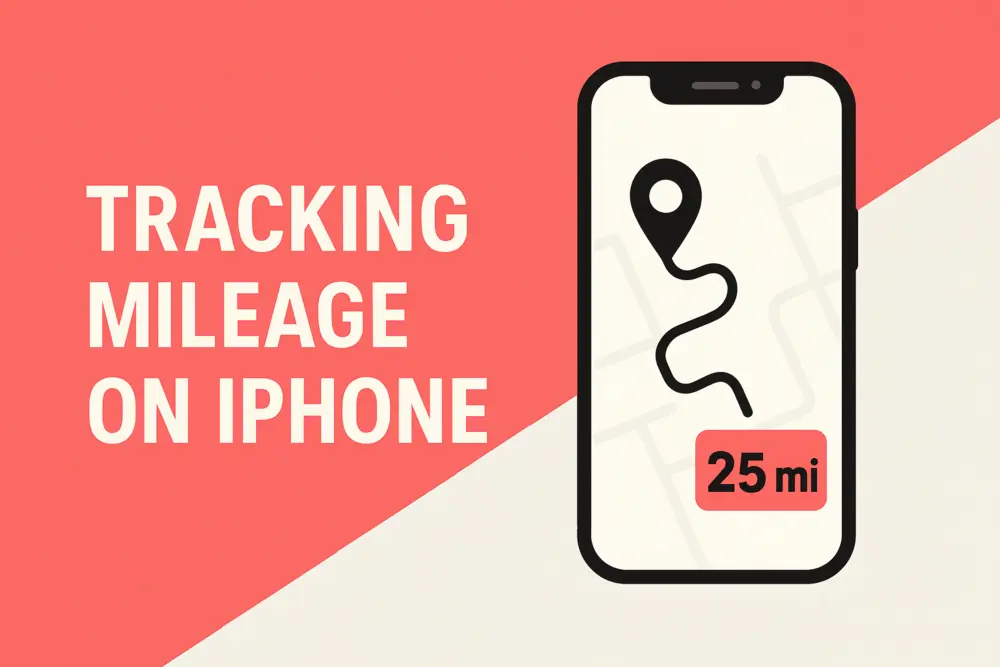
How To Track Miles on iPhone: Find your Match
Last Updated: August 6, 2025 Looking to track miles on your iPhone? Whether it’s for fitness, personal use, or business tax deductions, your iPhone offers
Try MileageWise for free for 14 days. No credit card required!
Related Guides
Related Blogposts


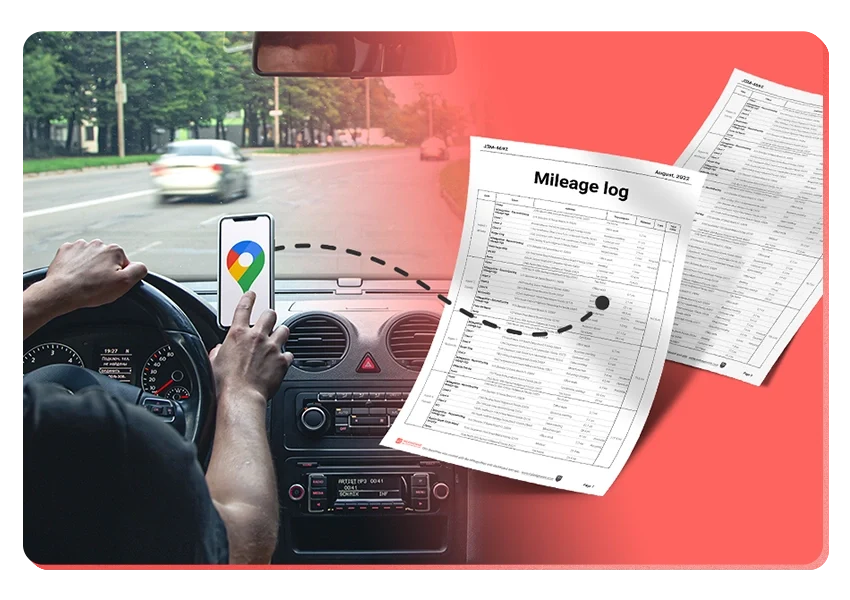
It’s Finally Here! Google Maps Timeline Import from Mobiles
Transform your Trip Lists into Mileage Logs with MileageWise

Introducing the Google Timeline to Mileage Log Mobile App
We’re excited to share our latest development! You can now convert your Google Maps Timeline drives directly into an IRS-compliant mileage log right on your

DoorDash Tips and Tricks: Your Edge Over Competition
Last Updated: November 17, 2025 I’m excited to share the top DoorDash tips and tricks shared by YouTuber Pedro “Mr.BetonYou” Santiago. He collected and vetted the

8 Uber and Lyft Scams Every Driver Should Know
Last Updated: November 9, 2025 Driving for Uber or Lyft can be a rewarding gig, offering flexibility and the chance to meet new people. However,
SherpaShare Shutdown – What To Do Now?
Last Updated: October 7, 2025 SherpaShare was a service designed primarily for people who work as independent contractors, particularly those in the ride-sharing and delivery
Gas Mileage Tracker: Your Key to Savings
Last Updated: August 8, 2025 A gas mileage tracker helps drivers watch their vehicle’s fuel use, mileage, and related costs. You might want one to

How To Track Miles on iPhone: Find your Match
Last Updated: August 6, 2025 Looking to track miles on your iPhone? Whether it’s for fitness, personal use, or business tax deductions, your iPhone offers

Introducing the Google Timeline to Mileage Log Mobile App
We’re excited to share our latest development! You can now convert your Google Maps Timeline drives directly into an IRS-compliant mileage log right on your

Was Your Google Timeline Deleted? Here’s What Happened:
Last updated: November 20, 2025 If you recently opened Google Maps and noticed your Timeline was deleted or partially missing, you’re not alone. In this

It’s Finally Here! Google Maps Timeline Import from Mobiles
Struggling to Manage Your Trips After Google’s Timeline Update? If you’re reading this, you’ve likely encountered the recent update affecting Google Maps Timeline. With Timeline
Transform your Trip Lists into Mileage Logs with MileageWise
Last Updated: October 1, 2025 Do you have a list of monthly trips from a data source like Excel or Google Timeline, but need to
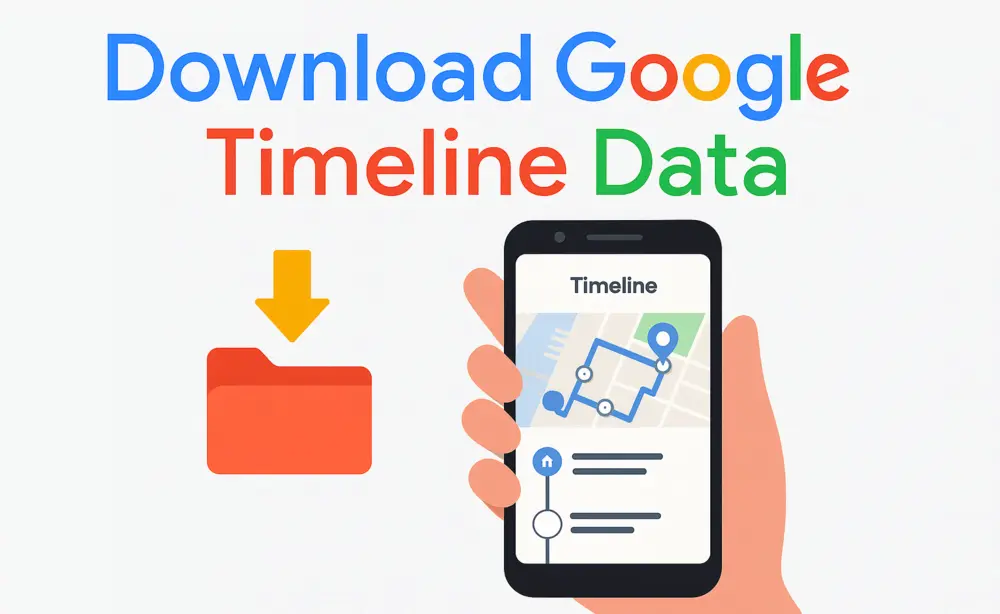
How to Download Google Timeline Data: A Guide
Google Timeline Import Hub Last Updated: October 30, 2025 Want to download Google Timeline data? This guide shows you how to extract your location history
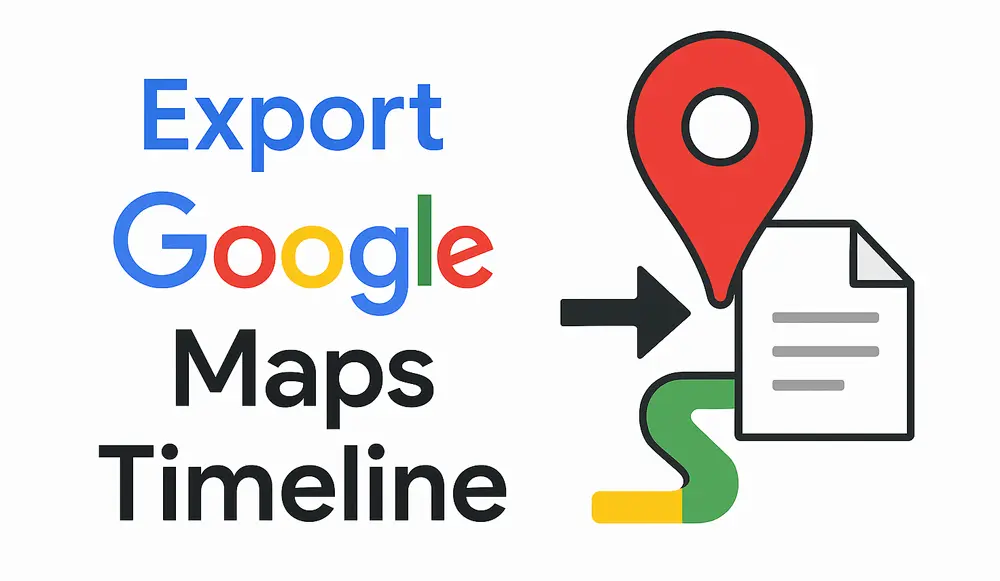
How to Export Google Maps Timeline: Get Your Data
Google Timeline Import Hub Last Updated: October 29, 2025 It can be tricky to export Google Maps Timeline data after Google’s recent updates. Many users
Google Maps Mileage Tracker: From Timeline to Mileage Log
Google Timeline Import Hub Last Updated: October 29, 2025 If you’re an active user of Google Maps Timeline you likely already know how convenient it
Timeero
Table of Contents Timeero Timeero is a time, location, and mileage tracking app designed for businesses and teams in the United States. It helps employers
Milewise by Allstate
Table of Contents Milewise by Allstate Milewise by Allstate is a pay-per-mile car insurance program offered by Allstate Insurance in the United States. It’s designed
Hurldr
Table of Contents Hurdlr Hurdlr is a finance and expense tracking app designed for self-employed professionals, freelancers, and gig workers in the United States. It



